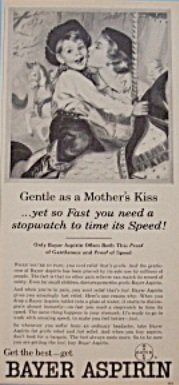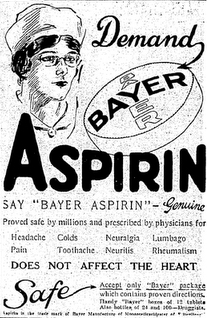

Bayer and Death: 1918 and Aspirin
Spanish Flu
Aspirin
Bayer
Salicylates and Pandemic Influenza Mortality, 1918–1919 Pharmacology, Pathology, and Historic Evidence The hypothesis presented herein is that aspirin contributed to the incidence and severity of viral pathology, bacterial infection, and death, because physicians of the day were unaware that the regimens (8.0–31.2 g per day) produce levels associated with hyperventilation and pulmonary edema in 33% and 3% of recipients, respectively. Recently, pulmonary edema was found at autopsy in 46% of 26 salicylate-intoxicated adults. Experimentally, salicylates increase lung fluid and protein levels and impair mucociliary clearance. In 1918, the US Surgeon General, the US Navy, and the Journal of the American Medical Association recommended use of aspirin just before the October death spike. If these recommendations were followed, and if pulmonary edema occurred in 3% of persons, a significant proportion of the deaths may be attributable to aspirin.
Aspirin Misuse May Have Made 1918 Flu Pandemic Worse
Bayer and Death: 1918 and Aspirin [Addendum: Monsanto was involved in the 1918 deaths. 1917: Bayer, The German competition cut prices in an effort to drive Monsanto out of business, but failed. Soon, Monsanto diversified into phenol (a World War I-era antiseptic), and aspirin when Bayer's German patent expired in 1917. Monsanto began making aspirin, and soon became the largest manufacturer world-wide.]
Part 2:. Aspirin Killed, Homeopathy Saved
Part 3:. Vaccines and CDC’s Myth of a 1918 Virus
Part 4:. Aspirin Deaths Continue Beyond 1918
Bayer and Death: A New Set of Questions about 1918

